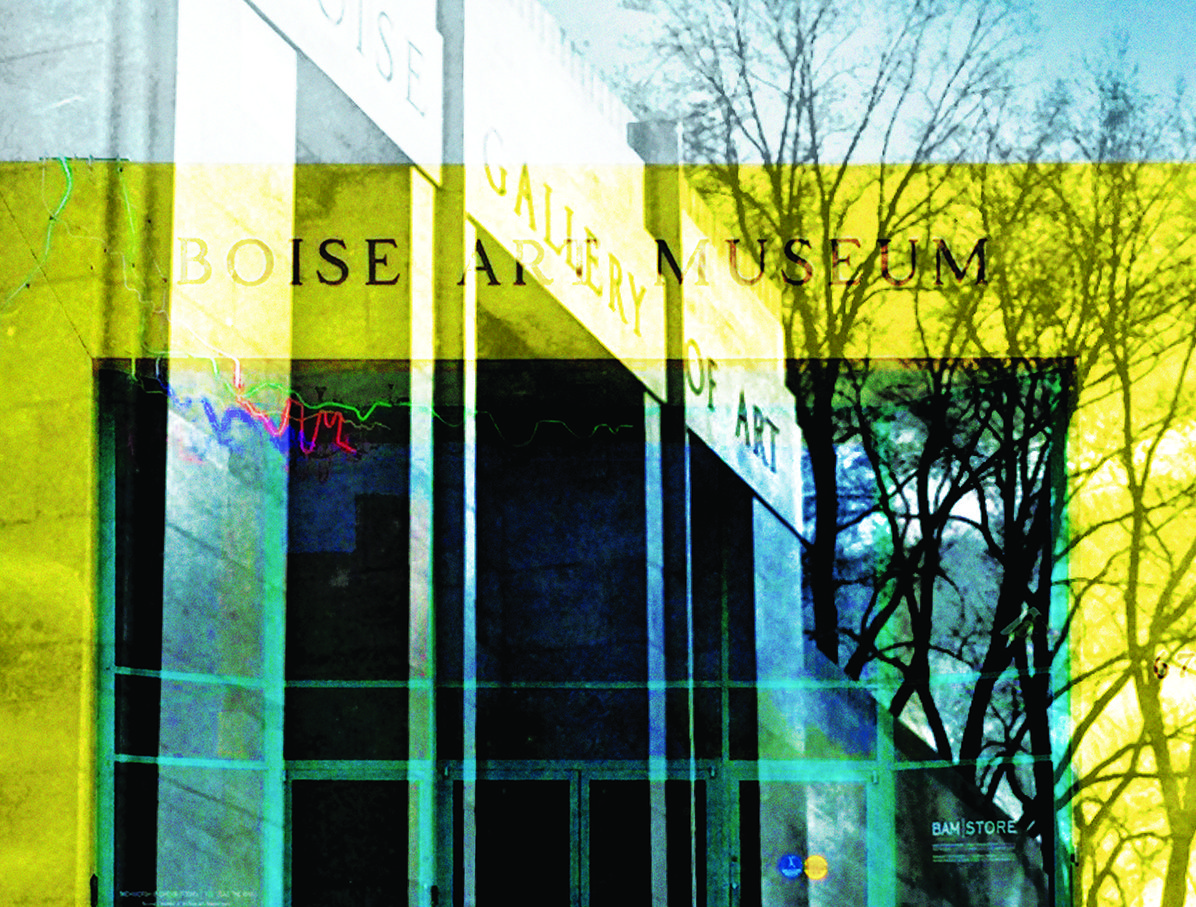I can’t imagine Boise without the Boise Art Museum,” said Kathleen Keys, Boise State University’s Art Department Chair, “It’s a major visual arts lifeline that brings people together.” For 80 years, “BAM” has been Boise’s fine art hub, the sole American Alliance of Museums (AAM) accredited art-collecting museum in Idaho. To celebrate, BAM threw itself an all-day bash, with coffee and donuts in the morning, commemorative gifts for the first 80 entrants, tours, artist demonstrations, birthday treats, performances, and 80s music.
A powerful ambassador for Northwest artists, BAM’s quality is akin to the Seattle and Portland museums.
“Many don’t expect it to be so fabulous, informative, and potentially life changing,” said Keys. “It’s exciting to see people bitten by that bug for the first time.”
Curators, docents, and volunteers, working with and around so much creativity notice shifts in their own perspectives.
“I had no art background before volunteering,” said Addy Mast, a docent of 30 years, “I was rapt, getting as much as I gave. It was a win-win.”
“We’ve got docents from every walk of life,” BAM director Melanie Fales offered. “(They are) excited about the work they do, making a difference, opening doors.”
Opening doors was the goal of the 50-plus people attending the Boise Art Association’s first meeting in 1931. Their vision? To “create in the minds of Boise and other Idaho people an increased appreciation for the fine and applied arts,” as well as build a respectable, growing art collection, housed in a gallery the city could be proud of.
Mission accomplished, BAM might say, since their mission statement is to “create visual arts experiences that engage and inspire learning”.
The offering of free school tours to over 10,000 students is just one of the ways BAM carries out its goal.
“No matter the age, they’re responsive, into it,” said Mast. “And as docents we teach through questions, encouraging visitors to find the answers with their eyes.” She added, “Because of my experience with BAM, when my husband Ed and I traveled the country and world, we visited the art museums, and did a lot of our own collecting. It really did change my life.”
“BAM affects people’s lives daily,” said Fales.
Fales told of a student who visited with his school and later learned of BAM’s biennial Higher Ground Art Exhibition. He submitted artwork that was accepted and hung on BAM’s walls, viewed by family, teachers, and principals.
“He used the cash award to apply to art school,” said Fales. “He’s studying there today.”
Fales mentioned the deep importance of a recent effort. “The Minidoka Exhibition was pivotal, a topic of local relevance and global importance,” she shared. “This happened right in our backyard. It’s a missing chapter in national and state history. A story so powerful and heartbreaking.”
The exhibit showcased artistic endeavors that flourished under the most adverse of conditions. Works of actual interns, as well as contemporary artists whose families were directly impacted by events of World War II were displayed. Taped off floor areas demonstrated the tiny barracks size, rooms housing up to nine. Identification tags were recreated with names and camp locations, then bundled and suspended from BAM’s ceiling. Civil rights questions were asked, with responses left on tags for the wall.
“An internment camp in Idaho?” shocked visitors wrote. “We had
no idea.”
“I didn’t even know I had a family member in one of the camps.”
“It was a source of shame, something nobody talked about.”
“When Grandma talked about ‘going to camp,’ I thought she meant summer camp. I had no idea she was talking about being incarcerated.”
“Not only did we get local support, but recognition and a grant from the National Endowment for the Arts,” Fales said. “It was one of the most gratifying projects we’ve ever done.”
For over a decade, BAM has enjoyed a great partnership with nearby Boise State University. BSU’s funding is reciprocated by faculty, staff, and students receiving free admission.
“It’s a perk not many know about,” Keys said, further explaining the BSU-BAM relationship. “BAM is interested in our faculty as professional artists, exhibiting their work at their location and online. They take students as interns, finding ways to support them. We contribute through volunteerism at Art in the Park and other events. There’s a long list of things we’ve done together.”
Another of BAM’s annual projects not everyone connects with BAM is the increasingly popular, three-day, open-air Art in the Park.
“It’s a major fundraiser,” Kathleen Keys said, “It amazes me how many people don’t realize it’s a BAM event.”
Currently, BAM is the home of a constantly-expanding combination of realism, modern, and contemporary, as well as the largest public collection of famed outsider artist James Charles Castle’s works. BAM continues to be true to its roots, showcasing Idaho and Northwest artists through biennial and triennial exhibitions.

